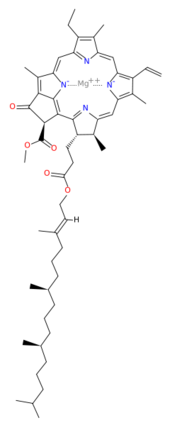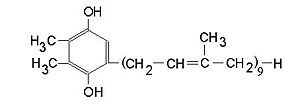Photosystem II
From Proteopedia
| Line 1: | Line 1: | ||
<applet load="1s5l" size="400" frame="true" align="right" /> | <applet load="1s5l" size="400" frame="true" align="right" /> | ||
| + | |||
| + | {{STRUCTURE_1s5l| PDB=1s5l | SIZE=400| SCENE= |right|CAPTION=Photosystem II, [[1s5l]] }} | ||
| + | |||
[[Image:1s5l.gif|250px|left]] | [[Image:1s5l.gif|250px|left]] | ||
==Background== | ==Background== | ||
Revision as of 09:14, 17 August 2011
|
Contents |
Background
This structure of Photosystem II was crystallized from the cyanobacteria, Thermosynechococcus elongatus, at 3.0Å [1] and at 3.50 Å [2]. PDB codes are 2axt and 1s5l, respectively. Cyanobacteria and plants both contain Photosystem II while photosynthetic bacteria contain the bacterial reaction center. This photosynthetic protein complex is associated with a variety of functional ligands. It is a composed mainly of alpha-helices. Nineteen are in each monomer, with multiple extrinsic subunits associated with the oxygen evolving complex missing from this crystallization. Photosystem II is a membrane bound protein complex that in plants is associated with the thylakoid membrane of chloroplasts. regions correlate with membrane associated nature of the protein. Hydrophobic helices make up the transmembranal portion, while polar residues are concentrated externally on either side of the membrane.
Photosynthesis
Photosystem II is an integral part of photosynthesis, the conversion of light energy into chemical energy by living organisms. Photosystem II is linked to a variety of other proteins, including Photosytem I. These proteins ultimately produce NADPH and ATP that power the Calvin cycle. Using this energy, glucose is synthesized from carbon dioxide and water.
Electron Transfer
|
Oxygen Evolution
Another important facet of Photosystem II is its ability to oxidize water to oxygen with its . These centers are structures with 3 manganese, 4 oxygen and a calcium linked to a fourth manganese[3]. Oxidation of water leaves 2 H + on the lumenal side of the membrane, helping to establish the proton gradient essential for ATP synthesis in the CF1CF0-ATP sythase protein.
Additional Resources
For additional information, see: Photosynthesis
References
- ↑ Loll B, Kern J, Saenger W, Zouni A, Biesiadka J. Towards complete cofactor arrangement in the 3.0 A resolution structure of photosystem II. Nature. 2005 Dec 15;438(7070):1040-4. PMID:16355230 doi:http://dx.doi.org/10.1038/nature04224
- ↑ Ferreira KN, Iverson TM, Maghlaoui K, Barber J, Iwata S. Architecture of the photosynthetic oxygen-evolving center. Science. 2004 Mar 19;303(5665):1831-8. Epub 2004 Feb 5. PMID:14764885 doi:http://dx.doi.org/10.1126/science.1093087
- ↑ Ferreira KN, Iverson TM, Maghlaoui K, Barber J, Iwata S. Architecture of the photosynthetic oxygen-evolving center. Science. 2004 Mar 19;303(5665):1831-8. Epub 2004 Feb 5. PMID:14764885 doi:http://dx.doi.org/10.1126/science.1093087
Proteopedia Page Contributors and Editors (what is this?)
Emily Forschler, Michal Harel, Ilan Samish, Alexander Berchansky, Eric Martz, Jaime Prilusky, Eran Hodis, Joel L. Sussman, David Canner, Karl Oberholser



